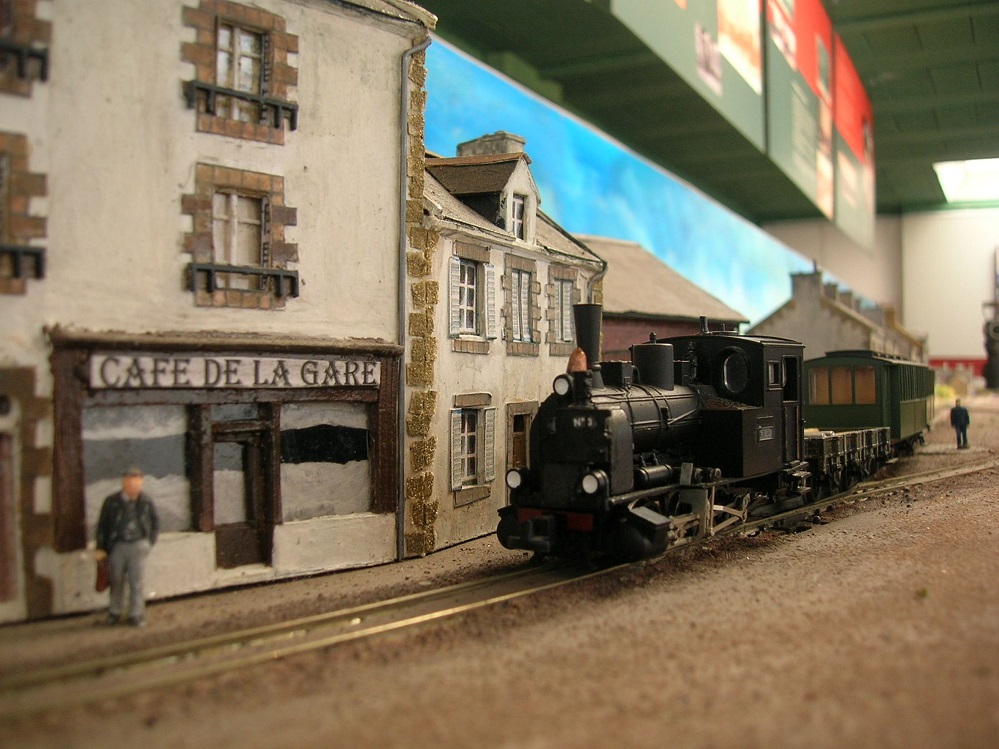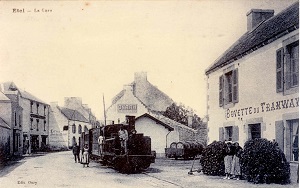
At the end of the 19th century, the railway was a great success at the 1889 exhibition, followed by a craze for seaside resorts, giving an impulse to the development of railways on the French coast. In 1892, the Morbihan Railway Company (CM) was entrusted by the General Council with the construction and operation of a network of local railways, which at its peak totalled 402 km.
The Tramway from La Trinité-Sur-Mer to Etel (1901-1934)
In 1899, Mr. Payot (a Parisian banker), requested the creation of three steam tramway lines. Two in Belle-lle-en-Mer and a third between La Trinité-Sur-Mer and Etel. The aim of this line was to facilitate the means of transport for tourism and thus provide the country with a new element of prosperity. Examined by the Ponts & Chaussées on 23 May, the file was put out to tender in the 5 communes concerned: The opinions are favourable in La Trinité, Belz and Etel; Erdeven asks for a modification of the route; Plouharnel gives an unfavourable opinion, being already served. As for Carnac, some of the inhabitants criticised the diversions via the beach, which would increase the price of transport. On 26 November, the "Société Anonyme du Tramway de la Trinité-sur-Mer à Etel" was created for a period of 50 years, with a capital of 400,000 Francs. This convention signed with the department takes note of the concession to the company which will undertake the construction at its own expense and then the operation at its own risk as soon as it receives the installations. A decree dated 19 October 1901 (J.O. 29/10) declared the tramway to be in the public interest and approved the specifications. In 1899, Mr. Payot (a Parisian banker), requested the creation of three steam tramway lines.

The end of an era
Road competition intensified in the 1930s, offering customers direct connections that the railways could not provide. The tramway's operating results suffered because traffic did not develop while expenses increased. The management of the Régie envisaged "a total substitution" and recommended a trial between Plouharnel, La Trinité and Auray on the one hand and La Trinité, Etel and Lorient on the other, by hiring 3 coaches, 2 trucks and 1 van. Time passed and at the beginning of 1933 the decision of a road haulier from Etel to institute a daily service between La Trinité and Lorient was of great concern to the management and the General Council. The year 1934 was used by the Compagnie des Chemins de Fer du Morbihan to radically transform the operation. No more passenger trains ran between Plouharnel and Etel, as the track had not been maintained since February 1933. On 13 November 1935, the General Council declared the line abandoned, followed by the removal of the installations. The road network replaced the rail.
In 1968 the "Compagnie des chemins de fer du Morbihan" (CM) became the "Compagnie de Transports du Morbihan" (CTM), a subsidiary of the Verney group, and operated road lines. The Morbihan department thus abandoned rail transport for rural services.